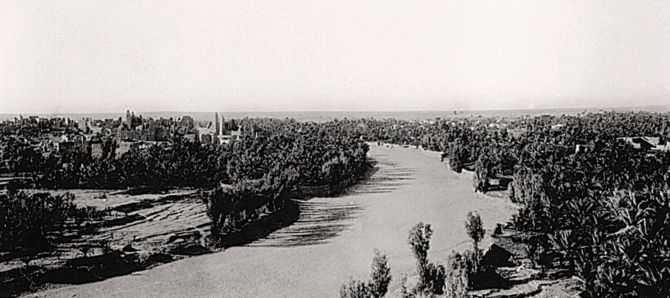
- ARAB NEWS
- 12 Jul 2025

RIYADH: Relics hidden beneath the remains of Ghasiba reveal a once 32,000 square meter-wide fortress that guarded the first known rule of the Al-Saud royal family.
Not many people know that Ghasiba District, founded in 1446, was the ruling center of the Al-Saud family for more than 300 years, even before the UNESCO World Heritage site of At-Turaif in Diriyah was established as the First Saudi State in 1727.
During the mid-15th century, Manaa’ Al-Muraide, leader of the clan of the Al-Duru tribe of Banu Hanifa, made the difficult 400-kilometer journey to Diriyah.
Known as “the father of the Saudi royal family,” Al-Muraide migrated from the east to the center of the peninsula, where he established the new Diriyah.
Al-Muraide’s difficult trip across the Arabian peninsula to Diriyah laid the foundation in establishing the Kingdom and the rule of Al-Saud.
Nestled in the northern region of Diriyah, many people overlook the importance of Ghasiba and the fortress that lies within its walls.
Dating back almost 600 years, Ghasiba is the oldest known district in the Najd region. Ghasiba was the seat of government between the era of Manaa’ Al-Muraide and the early days of Imam Mohammed bin Saud’s reign.
Diriyah used to have five districts: Ghasiba, Al-Tarfaiya, Al-Mariha, Al-Qusayreen and At-Turaif. As the home to the first rule of the Al-Saud family, Ghasiba is a very important district in the Kingdom’s history.
The triangular fortress that protected the district was built in a very strategic location because it sits on an elevated section overlooking Wadi Hanifa.
There are three sides surrounding the fortress wall that come to a triangular point on an elevated slant. It gave the location more security and protection against attackers from opposing armies, including the Ottomans.
The gates of the fortress were located in the center of the far eastern wall. One very unique aspect of Ghasiba’s structure was its gate. Unlike any other gate at the time in the region, the entrance of Ghasiba Fortress was made of iron.
All other Najdi doors in the region were made out of wood, such as palm trunks and rush plants. Travelers that migrated through the district were always caught off guard and intrigued by the unique design of the fortress.
The royal family of Al-Saud lived in Ghasiba until they decided to establish the First Saudi State. They traveled through Al-Tarfaiya District in Diriyah to eventually make their way to At-Turaif, where they established the First Saudi State in 1727.
After the Al-Saud ruling family left Ghasiba and established their roots in At-Turaif, the Al-Dugathair family, a very well-known tribe and descendants of the Banu Hanifa, continued to live there until Ghasiba Fortress was destroyed by the Ottomans during an attack.
To this day, the three fortress walls of Ghasiba contain the remains of a palace and mosque where Imam Mohammed bin Saud, the first imam of the First Saudi State, once lived.
The establishment of the First Saudi State occurred in 1727, but the first known origins of the rule of the Al-Saud family took place in the northern district of Diriyah in Ghasiba.
The Al-Saud family rule started from this district, which gives it great significance in the history of the Kingdom.